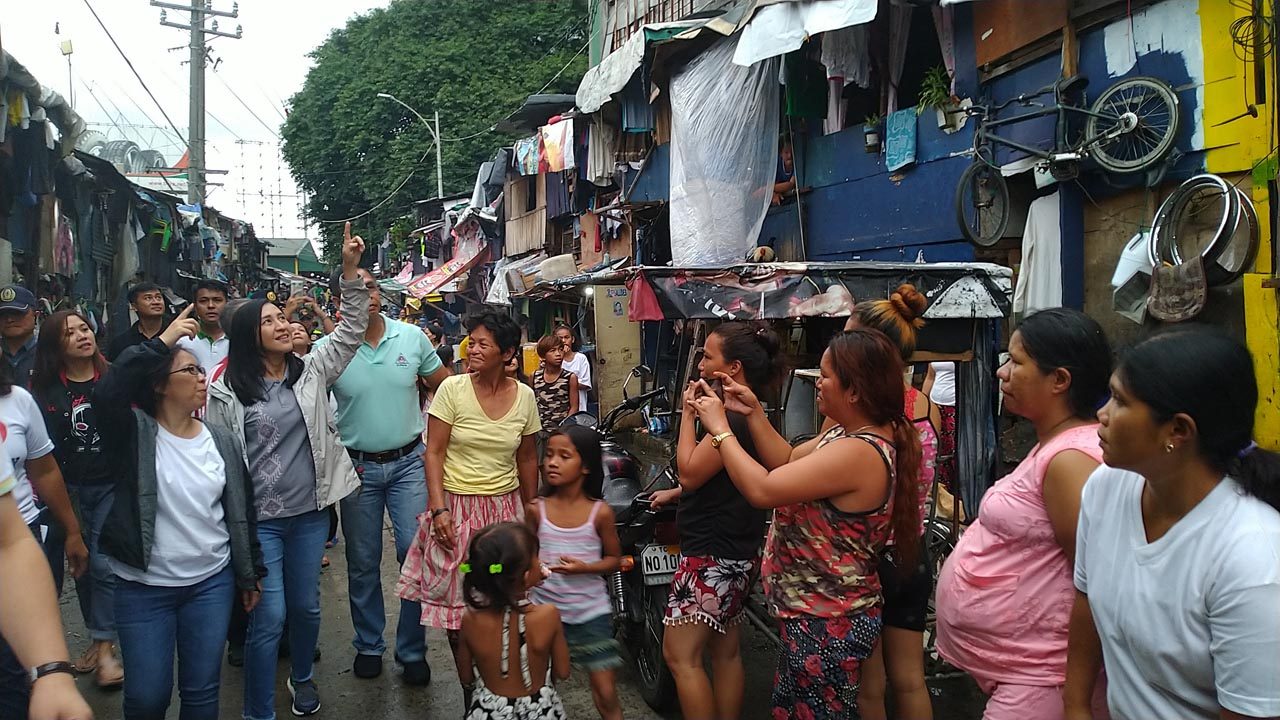SUMMARY
This is AI generated summarization, which may have errors. For context, always refer to the full article.

MANILA, Philippines – Quezon City representatives, councilors, and other stakeholders pushed for on-site, in-city relocation for the 18,000 informal settler families (ISFs) that will be affected by the construction of the Segment 8.2.
During a hearing of the House committee on Metro Manila development on Tuesday, November 12, the North Luzon Expressway-C5 North Link project, or Segment 8.2, was discussed with regard to the issue of relocating ISFs, since the construction will affect 8 barangays in Quezon City.
The Metro Pacific Tollways Corporation (MPTC) said it can build around 2,500 to 9,400 units for the informal settlers, depending on the number of levels that will be built. The design has yet to be discussed with stakeholders.
When asked of their plans for the informal settlers, the National Housing Authority (NHA) said the 1,000 units they have made available for the ISFs are outside Quezon City. The units are located in Bulacan, in the municipalities of Norzagaray and Pandi.
Manila 1st District Representative and committee chairperson Manuel Lopez responded that off-city relocation has been proven to be ineffective in the past. NHA National Capital Region manager Emma Angeles said these locations were picked by ISFs themselves because they wanted houses and lots, whereas the area provided by the MPTC only allowed for mid- to high-rise buildings.
Quezon City 6th District Representative Kit Belmonte acknowledged that while some ISFs may prefer to be relocated outside the city, it is more important to allow the local government and other stakeholders to have a role in making the decisions.
Luz Savilla, representing the ISFs in Barangay Bagbag and Barangay Sauyo in Quezon City, said the families had not been provided a list of entitlements, census claims, and beneficiary selections from the NHA, as well as details of the proposed relocation site. They also asked to participate in the design of the housing.
But most importantly, they pushed for in-city relocation. “Mas mabubuhay kami sa mataas na building kaysa sa malayo,” Savilla said. (We will survive better in a high-rise building than in a housing that’s far away [from economic centers].)
For the Quezon City government’s part, District 6 Councilor Marivic Co-Pilar asked if the funds for housing could be transferred to the city government instead. Public Works Director for Public-Private Parnership Alex Bote said the department has had no experience in doing so.
Savilla said they would prefer to have the city government handle the relocation, since their vision for in-city relocation is aligned with what the ISFs want.
Earlier, Quezon City Mayor Joy Belmonte pushed for a township initiative that would accommodate ISFs, which will be located within the city. She also formed a task force that would address the relocation of the 18,000 informal settlers along the construction site. – Rappler.com
Add a comment
How does this make you feel?
There are no comments yet. Add your comment to start the conversation.